
For the past two and a half weeks, I’ve seen vastly more goats than people, feasted on oranges straight from the tree, slept in pine forests and on windswept beaches, been welcomed daily into the homes of Turkish villagers, and lunched in the ruins of ancient Greek civilization. I’m hiking the Lycian Way, 540 km from Ölüdeniz to Antalya. On the trail, it’s been a dream. But preparing for the journey was an adventure in and of itself — and a far more stressful one at that.
This is the first long-distance hiking trip my hiking partner Carlos and I have done, and we didn’t have a lot of information about what specifically would be useful to know and use on the Lycian Way. The pressure to pack right was compounded by the fact that the Southern coast of Turkey isn’t exactly teeming with outdoor sports retailers. We researched and deliberated for months, and honestly only settled on our final pack list because it was time to get on the plane and go. Having been on the trail for almost three weeks now, I think our gear has held up pretty well — admittedly, it helps that on the sunny days, the views are so breathtaking I can’t even be bothered to think about my discomfort. For anyone considering a similar journey, here’s a rundown of some of the basic things we’ve learned along the way.

The first thing to determine is whether to carry a tent or go pension-to-pension. To hike the entire trail straight through, you do need a tent; there are several 2-3 day stretches during which the trail doesn’t pass a village. Many people simply skip over these sections, while others arrange with nearby pension owners to do the sections as day trips. Staying exclusively in pensions requires a bit more planning, but allows hikers to carry significantly lighter packs without any camp gear, and enjoy the comfort of a warm bed every night.
Having spent every summer of my childhood in the States camping around rural Wisconsin, I was looking forward to spending some nights roughing it. There are some unbelievably beautiful campsites nestled between the trees and rocks just off the trail, and while you’ll get absolutely amazing views from the trail during hiking hours, setting up camp and sitting down to enjoy the sunset over the Mediterranean and then the sea of stars in the night sky adds an entirely new dimension to the experience.
So, for camping we carried a tent, sleeping pads, sleeping bags, headlamps, a lightweight stove and titanium pot, and external batteries to charge our phones (which functioned as communication, camera, and GPS). (Although we did order quite a bit of our gear internationally, we found good selections of hiking gear at Decathlon and various sporting goods shops in Karaköy, especially along Kemeraltı Caddesi.) These items together probably made up the bulk of our pack weight, but were essential for nights on the trail. If you don’t plan to camp, I wouldn’t suggest carrying any of these items.

We did end up spending quite a few nights in pensions as well. There are many more available than are listed in Kate Clow’s book or in the Lycian Way app. Many advertise along the trail. Prices for a double room, including breakfast, were generally 40-60TL per person — although I got the distinct impression that they are subject to change, as most of the time we didn’t see any prices listed or sign any kind of paperwork for our stay. Dinner is generally available for an extra 10-20TL per person, which is definitely what lured us into a pension a few more nights than we’d planned. Some pensions, however, have made us pay separately for dinner, which 90% of the time leads to us being overcharged. We were once served a single grilled fish for which they later charged us 70TL. Ask for prices first.
Because we had our tent, we never made reservations ahead of time. Toward the beginning of our hike, we sometimes even walked up to completely empty pensions, campsites, or buildings under renovation for the summer season. Proprietors were, however, always happy to prepare a place for us to stay. As we got to the more popular sections of the trail, especially around Kaş, things got a bit busier. Some people traveling without a tent would call ahead once they saw signs on the trail, or would call from one pension in the morning to a place in the next town. Most hosts know the route and are happy to suggest a place at the next destination or even call to make the reservation for you. Using the internet for reservations is much more difficult, as 3G and WiFi can be scarce, and many pensions aren’t listed online.

Once we’re on the trail, a good percentage of our day is spent talking about feet: what hurts, what’s okay, what feels better than yesterday, what Carlos’s blister is doing, which toe I can’t really feel this morning. Scintillating stuff. I can’t emphasize enough the necessity of good footwear. The Lycian Way covers a lot of rocky ground, some dirt roads and tractor trails, some pavement, a couple snowy peaks, fords a few streams, and even entails some light mountaineering across or down rocky cliffs. There have been rainy days, during which — when we were lucky — we spent the day splashing across muddy fields. On one particularly unlucky day approaching Kalkan, we battled thorny overgrown bushes for purchase on slippery rock ledges across 3 km of cliff face in steady rain (that’s a portion of the trail I would highly recommend skipping during bad weather, or if you’re not feeling particularly adventurous).
The bottom line is, we’ve really put our shoes to the test. I’m hiking in lightweight trail runners, and they’ve been remarkably comfortable and get great traction in the slippery and rocky terrain. I have, however, had to be extremely careful to avoid missteps when crossing fields of volcanic rocks or smaller stones. Many hikers opt for traditional hiking boots, which are sturdier and offer better ankle protection, but are heavier and more likely to cause blisters. The most important thing is just to wear what’s comfortable, and know how they’ll handle different conditions.

Beyond shoes, our wardrobe consists of: two t-shirts, one pair of hiking pants (much of the trail is lined with thorny bushes), two pairs of socks/underwear, warm sleeping pants and jacket, lightweight down coat, wind/rain jacket, rain pants, poncho, hat, bandana, sunglasses, and swimsuit. For me, the warm layers have been essential for camping overnight. Two weeks in, I actually upgraded my sleepwear from standard leggings and a long-sleeve shirt to warm fleece pants and jacket. But then again, I’m mostly cold-blooded. Carlos has had no such problems.
Other than clothing and camp gear, the most essential aspects of trail life are food, water, and first aid. Putting a portable first aid kit together for a month on the trail seemed like a daunting task, but we’ve really used only a few essentials. Firstly, Vitamin I: Ibuprofen! For absolutely everything that started to hurt after the first four hours of our first day on the trail. Secondly, our blister-care pack. Our method has been: needle and thread before bed, wake up tape up. Rather than arming ourselves with an array of band-aids of all shapes and sizes for blister taping and other skin maladies, we brought a simple roll of duct tape. As an added bonus, duct tape fixes absolutely everything not covered by Vitamin I! I’d also recommend carrying sunblock and some just-in-case anti-diarrheal medicine. Beyond that, you can determine for yourself how lightweight you feel comfortable traveling. Keep in mind that you will be passing towns with fully-stocked pharmacies at least once a week.
One of my personal favorite parts of hiking the Lycian Way is that I get to eat exponentially more Turkish food! It’s amazing what happens to your appetite after regularly hiking seven hours steadily upwards over rocky terrain. Passing through villages, we’ve stopped at pensions or cafes for a hot meal, or picked up snacks and dry foods at a market. Pensions generally serve what’s available, which in many smaller villages is not much more than what can be grown nearby. Fortunately, this is Turkey, and the fresh local ingredients are not only delicious, they’re prepared impeccably. The trail winds through olive, honey, tomato, pepper, orange, lemon, egg, fig, almond, walnut, banana, and goat country. As someone who can happily eat Turkish breakfast three times a day, seven days per week, this has meant full-on gastronomical bliss. Even when we stock up on dry foods, we’re feasting on flavorful dried fruits and nuts. Additionally, when passing through larger towns, we always make a point to check the days of the local street markets. Passing a street market and stocking up on local foods is like getting an extra Christmas. I also brought some chia seeds from a shop in Istanbul. On camp nights, I mix them with water, dried coconut flakes, and honey, soak overnight, and have an amazing easy breakfast. Water sources are plentiful in villages and well-marked on maps. We carry about 2L each, and most days could have gotten away with less.
Finally, and most importantly, the trail is different for everyone! As long as you come basically prepared, less planning generally makes the hike easier. The most frustrated hikers I met were those who were trying to make the trail and its residents fit some preconceived notion or plan with which they’d arrived. The more you revel in the fact that all you really have to do is walk, eat, and sleep in this stunningly beautiful landscape, the more amazing the journey becomes.
You can read more about Elayne’s Lycian Way experience at https://www.facebook.com/



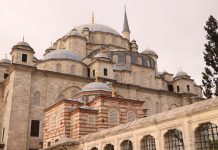




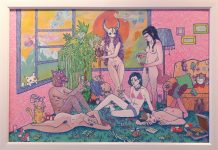
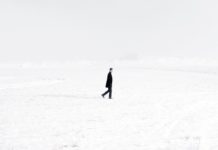
Great advice. Sometimes wisdom is so simple, which often is the case when it is based on experience. Thank you!
Hi Elaine,
Thanks for this very useful advice. With regards to buying gas canisters, when you mention Karakoy, where exactly is that?
Thank you for your very good information about Lisian Way